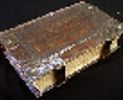
There is an argument among academics and theologians regarding John in the early Biblical writings. They think that a man called John the Evangelist (not the Apostle John) wrote the Gospel of John and possibly the Letters (epistles) and that a third John called John of Patmos wrote the Book of Revelation.
Academics say that the closing chapter of John (John 21) is an appendix to the Gospel and state that the author of this chapter is “the disciple whom Jesus loved”, (the Apostle John) implying that, by the time of its final revision, he was no longer alive (John 21:20-24) and that the Gospel of John had more than one author. The Apostle Peter was a fisherman, and it is accepted he dictated his account to the scribe John Mark (Mark the evangelist). John was also a fisherman and some modern scholars believe that John the Evangelist is in fact John Mark the same scribe. The Apostle John then penned the "appendix" personally to officially acknowledge it as his account. The Gospel of John is an eyewitness account of events. for some of which the Apostle John was the only disciple present. Academics acknowledge that he is indicated as one of the two unnamed disciples by the Sea of Tiberias (John 21:2), (he states he was there with his brother James which indentifies him). They agree that this disciple was a trustworthy witness to events at the Last Supper (John 13:23), at the cross (John 19:26-27) and, on Easter morning (John 20:2-10), and, possibly, in the high priest’s house at Jesus trial (John 18:15.)
The Apostle John serves in the Gospel not only as a witness but also as a role model of being one with Christ, for he is described as lying in Jesus’ bosom (John 13:23) as Jesus is in the bosom of the Father (John 1:18). At the tomb, he was the first to see and believe in the resurrection (John 20:8). The author states in the gospel that he is a disciple and was an eyewitness to all these events.
Whether he penned it himself or merely dictated it, and then added the "appendix", it is clear to me that it is the account of the Apostle John as only he could tell. I also believe that the Apostle John had to be John of Patmos the author of the Book of Revelation because Jesus made a statement in (Matthew 16:28), (Mark 9:1), (Luke 9:27) and I believe that John's Revelation is a fulfillment of Jesus statement. One of the apostles had to see the 2nd Coming before he died and John saw it in Revelation and wrote it down. But as a nod to the academics the Church gives one day for the Apostle and a second for the Evangelist.
BORN: 15 AD,
Bethsaida
DIED: Ephesus, Selçuk, Turkey


 Welcome
Welcome Calendar
Calendar Today's Word
Today's Word Lauds
Lauds Terce
Terce Sext
Sext None
None Vespers
Vespers Compline
Compline Matins
Matins